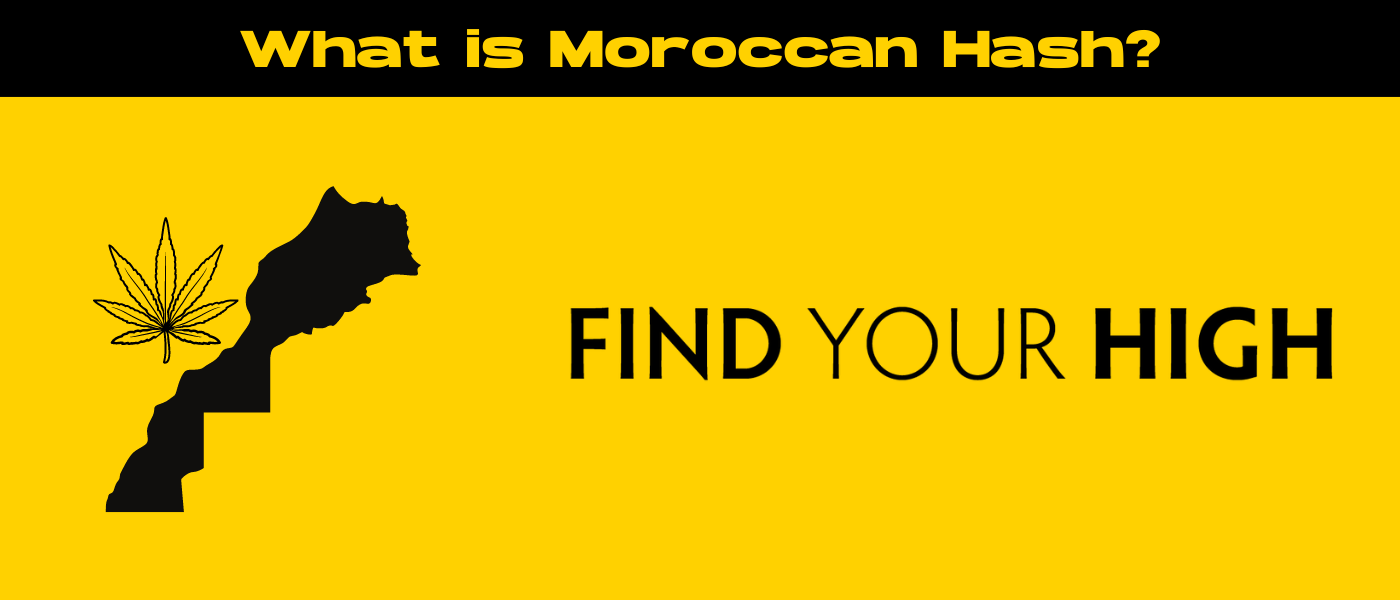Moroccan hash, also known as “kif” in local terms, is a high-quality cannabis concentrate celebrated worldwide.
Originating from the Rif Mountains of Northern Africa, Moroccan hash has a rich history dating back centuries, where it became deeply ingrained in the country’s culture and daily life. The art of producing hashish was passed down through generations, transforming it into a cultural staple and a traditional craft.
Known for its unique potency and aromatic profile, Moroccan hash holds a prestigious reputation in the global market, drawing demand from enthusiasts and connoisseurs alike. This blog will dive into the history and production methods of Moroccan hash, its significance in Moroccan social fabric, and explore why it’s revered worldwide.
How Moroccan Hash is Made
Hashish production is a meticulous craft that starts with the careful selection and cultivation of cannabis plants. Farmers often choose resilient strains like Beldia, which flourish in the arid climate of the Rif Mountains and are known for their rich resin production. Similarly, enthusiasts cultivating Penis Envy mushrooms follow a precise process, selecting ideal conditions to ensure potent growth. Both cannabis and mushrooms thrive under strict attention to light, water, and environmental factors, resulting in high-quality resin or spore yields.
The traditional extraction process involves drying the harvested plants and then sieving them to collect the resin powder, a technique known as “shifting.” This powder is then hand-pressed into hashish, often using heat and pressure to enhance its potency and aroma.
In recent years, modern production methods have emerged, incorporating technological advancements like mechanical presses and refined sieving machines. While these innovations offer increased efficiency and consistency, they bring notable differences from the traditional methods, which are often regarded as more artisanal and deeply rooted in Moroccan heritage.
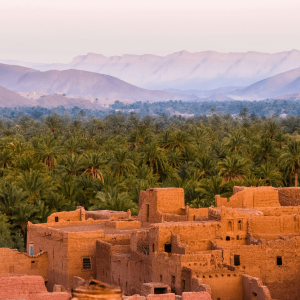
What Makes Moroccan Hash Unique
Texture and Appearance:
Moroccan hash is renowned for its distinct texture, which can range from soft and pliable to hard and brittle, depending on the specific method of production. This variation is largely due to the different techniques and pressures applied during the pressing process.
Color Variations:
The color of Moroccan hashish can vary widely, from light golden-brown to dark brown and almost black. Typically, the lighter colors indicate a fresher product, while the darker tones can suggest more aged hash or hash made from plants grown in less sunny conditions.
Consistency and Form:
Moroccan hash can be found in various forms, including small blocks, balls, or pressed coins. The traditional hand-pressed method usually results in a softer consistency, which can be easily molded, whereas more modern, mechanical methods might produce harder, more uniform blocks.
Aroma and Flavor Profile:
One of the standout features of Moroccan hash is its rich and complex aroma. The scent is often described as earthy with hints of spice, herbal notes, and a slight sweetness. This distinctive aroma is a result of the natural terpenes present in the cannabis plants used.
Common Scent Notes:
When appreciating Moroccan hash, you might detect several common scent notes, including pine, pepper, citrus, and even anise. These varying scent notes contribute to its unique and appealing fragrance, similar to the cannabis plant.
Tasting Nuances:
Upon tasting, Moroccan hash presents a smooth, flavorful experience. The flavor can be described as woody, slightly peppery, with subtle undertones of fruitiness and floral accents. The taste develops further with each inhalation, providing a rich and satisfying palette.
Potency and Effects:
Moroccan hash is celebrated for its potent effects, thanks to its high THC levels. Typically, the THC content can range from 20% to 60%, making it a powerful and effective concentrate.
THC Levels:
The THC levels in Moroccan hash vary depending on the cannabis strain and the specific production techniques used. Such high levels of THC make it a strong and long-lasting option for users looking for a significant impact.
Expected Experience:
Users of Moroccan hashish can expect a profound and enjoyable experience marked by a deep sense of relaxation and euphoria. It’s known for providing a calming and sedative effect, which can help with stress relief, pain management, and insomnia. Some consumers also report an enhanced sense of creativity and focus, making it a versatile choice for various occasions.
Legal Status and Regulations
The legal status of Moroccan hashish consumption within Morocco has seen significant changes over the years. Although traditionally tolerated due to its cultural significance and economic impact, recent legislation has aimed to regulate and control the cultivation and production of cannabis specifically for medical and industrial purposes. This shift has had a profound impact on local communities, especially those in the Rif Mountains, who rely heavily on cannabis farming for their livelihoods.
Internationally, the legality of Moroccan hash varies, with countries like the Netherlands and Spain being more tolerant of its use, while others maintain strict prohibitions. These legal gray areas can pose risks for consumers and producers alike, as regulations differ widely and are often subject to change. Compliance with both local and international laws is crucial to avoid legal complications.
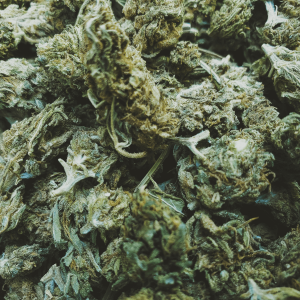
Benefits and Uses of Moroccan Hash
Medicinal Uses
- Pain relief: Moroccan hash is well-regarded for its effectiveness in alleviating various types of pain, including chronic pain, muscle spasms, and migraines. Its high THC content makes it a potent option for those seeking substantial pain relief.
- Anxiety and stress management: Many users turn to Moroccan hash for its calming effects. The deep sense of relaxation it provides can significantly reduce anxiety and stress, making it a popular choice for those looking to unwind and decompress.
Recreational Uses
Moroccan hash boasts a rich heritage and is widely celebrated for its recreational benefits. Its potent effects can provide a joyful and euphoric experience, making it ideal for social gatherings or personal enjoyment.
Users often describe a robust sense of well-being and contentment, which can enhance various recreational activities. Whether it’s enhancing a quiet evening or adding a unique dimension to a party, Moroccan hash cannabis use continues to be a favored option for those seeking a powerful, yet enjoyable high.
Popular Consumption Methods
There are several popular methods for consuming Moroccan hash, each offering a different experience. Traditional techniques include smoking it in a pipe, water bong, or mixing it with tobacco in a joint.
In recent years, vaporization has gained popularity as it provides a smoother, cleaner, and more controlled means of inhalation. Additionally, Moroccan hash can be incorporated into edibles, allowing users to enjoy its effects through various culinary creations.
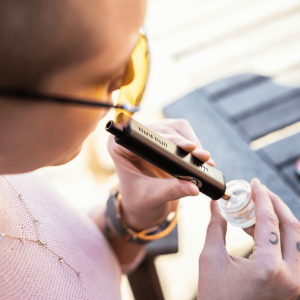
Experience Comparison with Other Cannabis Products
Compared to other cannabis products, Moroccan hash stands out due to its rich historical background and distinctive hash production methods. Its high THC levels make it significantly more potent than many other forms of cannabis, such as flower or lower-grade cannabis concentrates. Users often find that the effects of Moroccan hash are more intense and long-lasting.
While flower might offer a lighter, more subtle experience, Moroccan hash delivers a powerful, deep impact, making it a preferred choice for those seeking a more profound cannabis experience.
How to Identify Quality Moroccan Hash
When it comes to identifying quality Moroccan hash, there are a few key factors to consider.
Start with a visual inspection; high-quality hash will typically have a consistent, dark color with a slightly glossy finish. If it’s too crumbly or dry, it might be low-quality.
The smell and taste can also be telling—good Moroccan hashish will have a rich, earthy aroma with hints of spice and wood, while poor-quality hash may have a faint or unpleasant odor. For the taste, expect a smooth and flavorful experience; any harshness could indicate impurities.
Purity is crucial, so look for small, well-formed pieces rather than overly pressed blocks, which could be a sign of adulteration.
When purchasing, always buy from trusted sources and reputable vendors to avoid counterfeit products. Look for sellers with positive reviews and transparency about their sourcing and production practices to ensure you’re getting authentic, high-quality Moroccan hash.
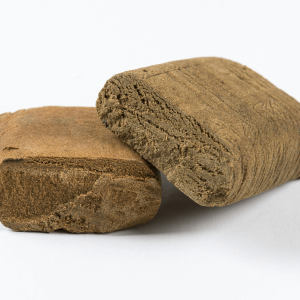
Cultural Impact and Modern Trends
Moroccan hash has left an indelible mark on both art and music, inspiring countless creators with its rich heritage and potent effects. From iconic references in pop Moroccan culture, like music lyrics and films, to its influence on contemporary art movements, the resonance of Moroccan hash is undeniable.
Shifts in production have leaned towards more sustainable and regulated practices, addressing both environmental concerns and evolving consumer demands. Interestingly, there’s been a surge in new consumer bases, particularly among younger generations and medical users seeking natural alternatives.
Looking ahead, the industry anticipates more widespread legalization and acceptance, potentially leading to a booming global market. As regulations relax, innovation in production and diversification of products could transform the way Moroccan hash is perceived and consumed, ushering in a new era for this storied substance.
Conclusion
To sum up, Moroccan hash stands out in the cannabis world for its potent effects, rich cultural heritage, and diverse consumption methods. Whether used for medicinal relief or recreational enjoyment, its high THC content provides a robust and long-lasting experience.
Understanding how to distinguish quality hash and staying compliant with varying legal regulations is crucial. Cannabis delivery services offer a convenient way to access high-quality Moroccan hash, ensuring you receive authentic and reliable products. As Moroccan hash continues to influence modern trends and gain acceptance, it remains essential to approach its use responsibly, ensuring a safe and enjoyable experience for all.
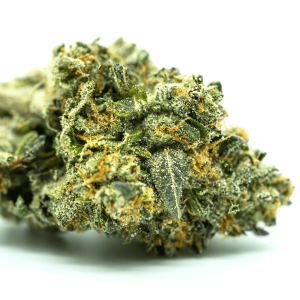
Frequently Asked Questions
1. What is Moroccan hash?
Moroccan hashish is a type of cannabis concentrate produced using traditional techniques in Morocco. It is well-known for its high THC content and rich, earthy aroma. The process involves collecting and sieving cannabis resin from the dried cannabis plant, then compressing it into solid bricks or cakes. Moroccan hash is highly regarded for its potent effects and cultural significance.
2. Which is the best hash in the world?
The “best” hash can be subjective, depending on personal preferences and desired effects. However, Moroccan hash is often celebrated for its quality and potency. Other notable mentions include Afghani hash and Lebanese hash, each with unique characteristics and production methods. Ultimately, the best hash is a matter of individual taste and the specific qualities one values in the product.
3. What is the difference between Lebanese and Moroccan hash?
Lebanese and Moroccan hash differ primarily in their production techniques and the cannabis strains used. Lebanese hash often utilizes cannabis plants that are dried and cured for extended periods, resulting in a rich, aromatic product with a reddish or blonde hue. Moroccan hash, on the other hand, tends to be darker and stickier due to its processing methods and resin collection. The effects and flavor profiles can also vary, with Lebanese hash typically offering a slightly milder experience compared to the more intense Moroccan hash.
4. What is the most expensive hash?
The most expensive hash can vary based on factors such as purity, origin, and market availability. Traditional Moroccan and Afghani hashes are typically on the higher end of the price spectrum due to their renowned quality and historical significance. Additionally, more exotic and rare varieties, such as high-grade Nepalese temple balls, can command premium prices on the market. These higher costs reflect the craftsmanship, time, and effort involved in producing these exceptional products.

 Rewards
Rewards



